Scientists Have Captured the First-Ever “Image” of dark matter
Although it has been debated by astronomers for decades, it has remained unseen and, in fact, undetectable, according to researchers at the University of Waterloo in Waterloo, Ontario. It is believed to be a representation of dark matter, a link in the vast cosmic web that our universe’s billions of galaxies are believed to be a part of. According to a statement made after the new research was published in the peer-reviewed Monthly Notices of the Royal Astronomical Society:
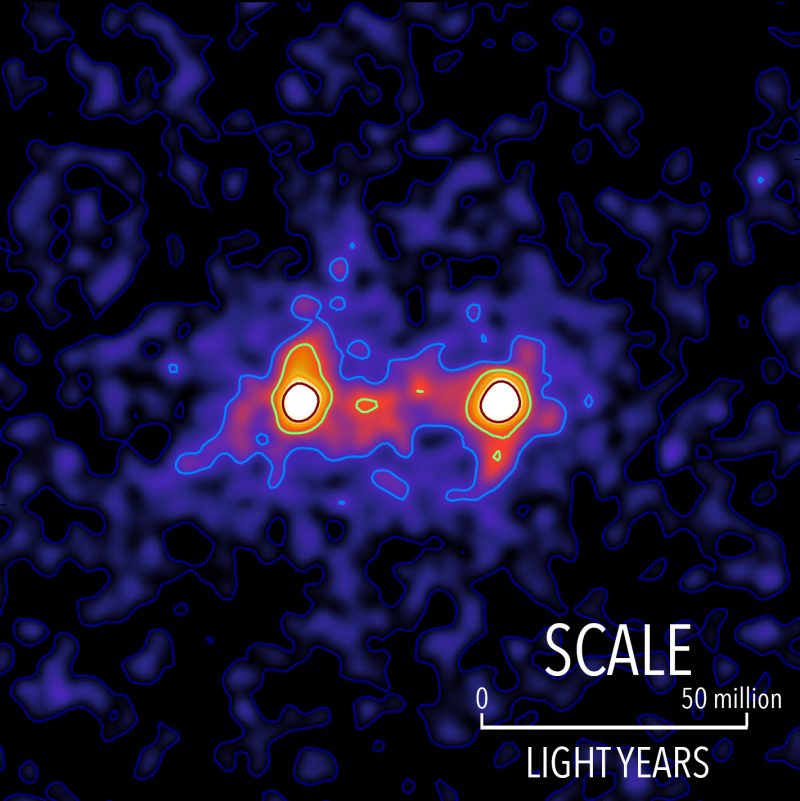
The composite image, which combines several individual photographs, confirms expectations that galaxies around the universe are connected by a cosmic network connected by dark matter that was previously unobservable.
If this study is accepted and repeated by other astronomers, it would be contrary to claims made by those scientists that dark matter may not actually exist or may not exist in the manner we now believe it to.
Why do scientists think dark matter exists? After all, no one has ever claimed to have spotted it right before this photograph, much less to have taken a picture of it. The Lambda Cold Dark Matter model, also known as the standard model of Big Bang cosmology, which is a widely accepted theory of how our universe functions and agrees well with what astronomers think they see when they look out into deep space, gives dark matter an honored place in astronomical theory.
Some astronomers believe that dark matter is either nonexistent or that we just don’t comprehend it. For instance, in the most recent iteration of his novel theory of gravity, University of Amsterdam physicist Erik Verlinde claimed that dark matter is not necessary to explain the movements of stars in galaxies.
Soon after, a group of astronomers from the Leiden Observatory in the Netherlands, led by Margot Brouwer, put Verlinde’s idea to the test by examining the gravitational lensing of over 33,000 galaxies. Verlinde’s idea “agrees well” with the findings, according to her team’s analysis.
In astronomy, this kind of one-two punch is frequently observed. A theory makes an assumption, and observations confirm it (or not). Of course, ideas and observations are never flawless and free from errors. Why else may they exist? For scientists to fully understand how the cosmos functions, they would have to be gods.
Therefore, in the next weeks, months, and years, it’s probable that other astronomers may agree or dispute that this image accurately depicts what University of Waterloo researchers claim it does.
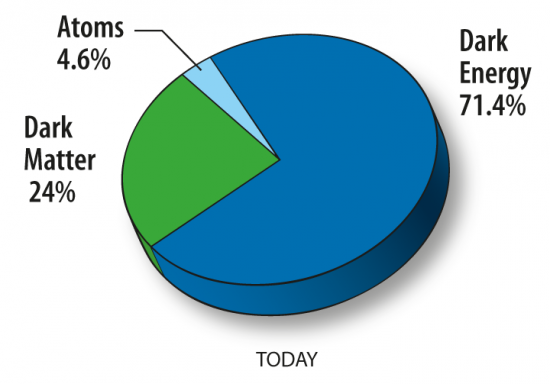
The majority of recognized cosmological models suggest that dark energy is responsible for 73 percent of the universe’s total mass and energy. Dark matter makes up the remaining 23% of the universe, leaving only 4% of it made up of ordinary stuff like stars, planets, and people. Pie graph from NASA.
In the meanwhile, be aware that around 25% of our universe’s “stuff” is dark matter, based on the most widely accepted cosmological theories. It doesn’t glow, absorb, or reflect light, but its effects are supposed to be discernible through the operation of gravity.
These theories contend that dark matter is crucial to the cosmic web’s development, our universe’s basic structural component. It is believed that this vast web is actually a network of filaments made of dark matter. Professor of astronomy at the University of Waterloo, Mike Hudson, who oversaw this study, provided the following assessment of the results:
For decades, researchers have been predicting the existence of dark-matter filaments between galaxies that act like a web-like superstructure connecting galaxies together. This image shifts us away from predictions and toward something we can see and measure.
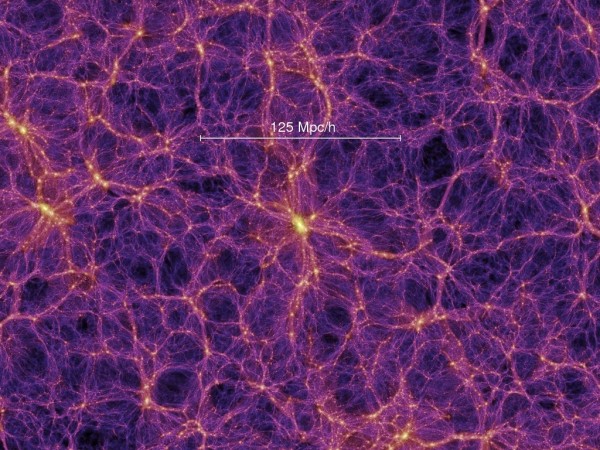
How did the University of Waterloo astronomers get their picture of dark matter? A method known as weak gravitational lensing, which causes pictures of distant galaxies to gently bend owing to the impact of an unseen object such as a planet, a black hole, or – in this case – dark matter, was used by Hudson and co-author Seth Epps, a master’s student at the time. They asserted to have quantified the effect in images taken over a period of years by the Canada-France-Hawaii Telescope on Mauna Kea.
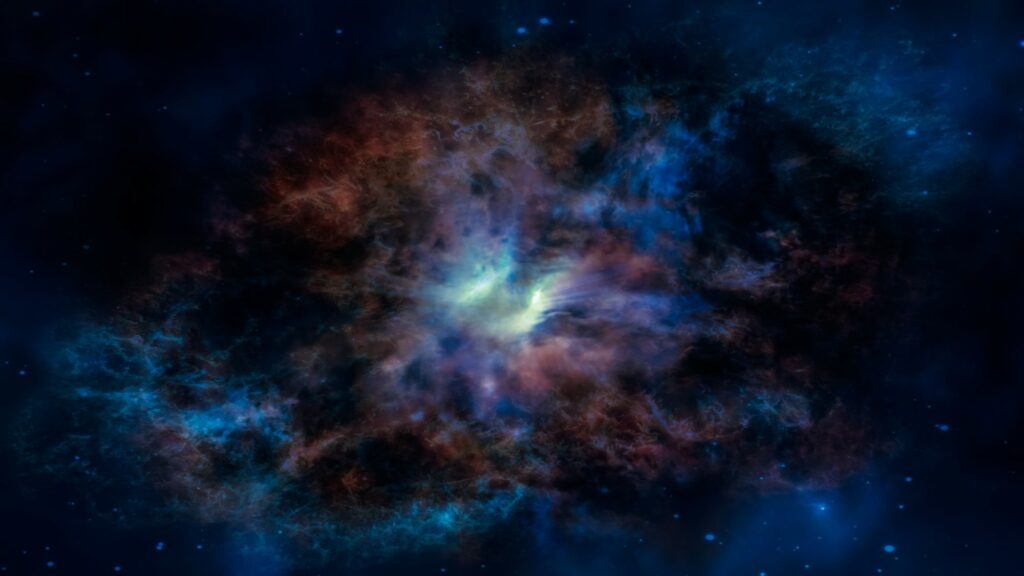
They created this composite image or map by combining lensing images from over 23,000 galaxy pairings that are 4.5 billion light-years distant. They assert that it demonstrates the presence of dark matter between the two galaxies. These astronomers claim that it is a dark matter bridge, to put it another way. According to their findings, the dark matter filament bridge is strongest between systems that are less than 40 million light years apart. Added Epps:
By using this technique, we’re not only able to see that these dark matter filaments in the universe exist, we’re able to see the extent to which these filaments connect galaxies together.
Now let’s see if additional astronomers can confirm these findings and if there is general agreement. If they do, yeah, that’s incredible!
Do not forget to share your opinion with us to provide you with the best posts !



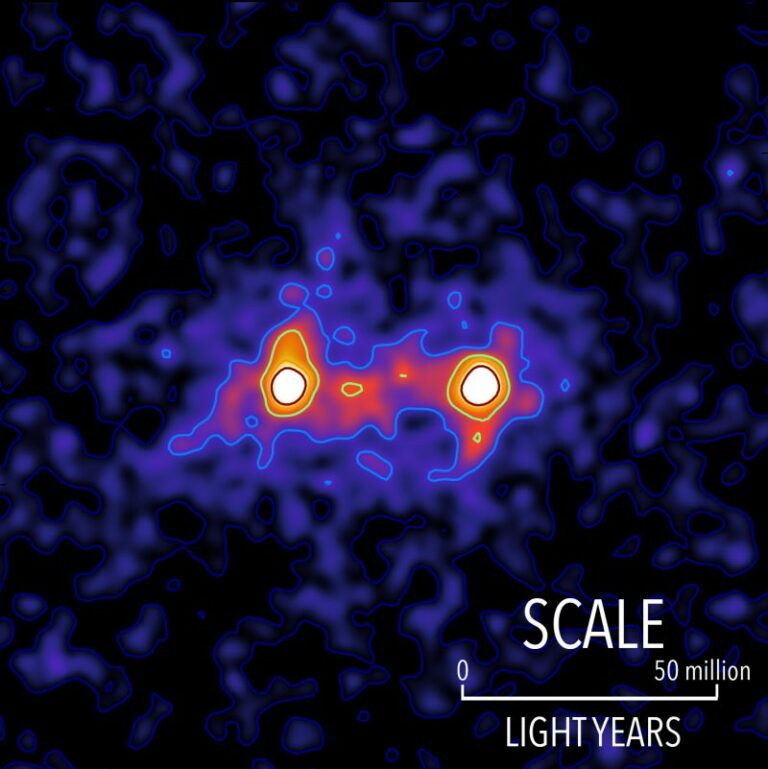
0 Comments